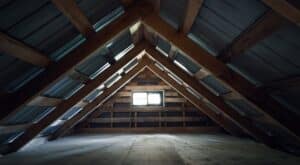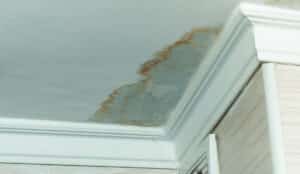Understanding Attic Insulation
Given the problem of winter ice dams in the Grand Rapids area, getting heat out of the attic in the winter is very important. Decreasing the amount of heat entering the attic, by way of appropriate attic insulation, is another way to solve the problem of ice dams in the winter. Enough insulation in the attic also keeps your home cooler in the summer, keeping the sun’s heat on the roof from entering the house.
In the Grand Rapids and West Michigan area, the recommended value of insulation in the attic is R-49 (the R standing for resistance to the flow of heat). This value, established by the EPA, has increased considerably over the past 30 years. Most houses in the Grand Rapids area were built long before these standards were in place. In our experience, we find that most houses have insulation for an R-value in the realm of 7-15 or around 15-30% of the recommended amount.
Most attics we see need some insulation to meet current standards, and this attic is an extreme case showing the need for good insulation. There is some insulation here, rather sporadically placed, and some areas have no insulation at all.
In the picture, baffles would be inserted at the eaves before adding insulation to keep the insulation from blocking air entering from the soffit vents.
Proper attic insulation and ventilation affect the life of the roofing and roof structures as well as guarding against water damage from ice dams. We inspect your attic when we come to inspect the condition of your roof.
Our estimates, then, include information about how much insulation is in place in your home, and how much should be added to get your home up to current standards. We have developed the knowledge and expertise to improve the insulation in your attic, and our experienced crews make sure that no new problems are created as new insulation is added.
Subsequent blog posts will give more information about the need for baffles and the protection of recessed lighting when insulation is added to your attic.




